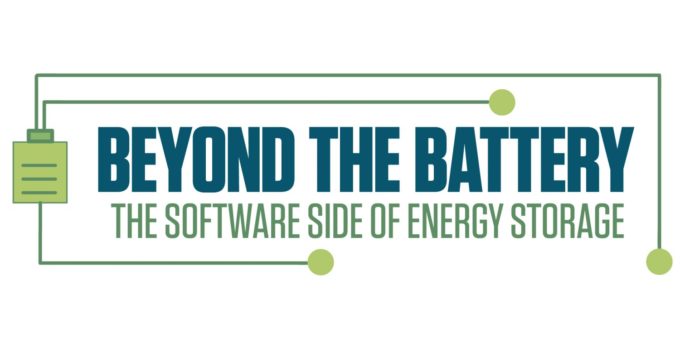Last week, Greentown Labs hosted the second of two thought leadership panels focussed on the future of the modern grid. This one, ‘Beyond the Battery – The software side of energy storage’, sponsored by Enel Green Power North America, featured experts from across the battery value chain with unique insights into how software is revolutionizing the way batteries can be leveraged on a decentralized, decarbonized and digitized grid.
Lead by moderator Richard Stuebi (Future Energy Advisors), our five panelists; Ravi Manghani (Greentech Media Research), Sander Cohan (Enel Green Power North America), Dana Guernsey (Ambri), Mike Hess (Panasonic), and Michael Berlinski (Customized Energy Solutions) spoke on this topic for an hour. A full video recording of the panel can be found here.
Energy Storage Software: The Opportunity
The energy storage market is poised to grow—and it’s expected to grow fast. According to market research firm IHS, the energy storage market is set to “explode” to an annual installation size of 6 gigawatts (GW) in 2017 and over 40 GW by 2022. Without software, energy storage systems are “dumb” and unable to communicate with users, the grid or energy generation assets. This makes the development of software a key activity to enable this industry to reach it’s full potential.
As many entrepreneurs seek to gain a foothold in the growing energy storage software (ESS) market, they find themselves asking a number of questions. Which user(s) should the ESS we build be designed for? Vendors? Developers? Other stakeholders? And how will that ESS be used? For project analysis? Operation? Or perhaps battery system optimization?
These are critical questions as the range of applications for ESS are numerous and the potential revenue streams vary. So who will be the major customers of energy storage systems and software in the future? According to the Rocky Mountain Institute’s ‘The Economics of Battery Energy Storage’ report, there are a range of potential business models for energy storage across ISO, Utility and Customer categories. See Figure 1 below for a visual representation.

Whether it be homeowners using a battery for demand charge management or a utility utilizing a battery to address transmission congestion, once the customer and use case is identified, and the need for complementary software articulated, there is the question of what the energy storage software will be doing.
From a high level, revenue stacking—a topic discussed on the panel—further complicates the demands on a software system. Providing “stacked services” is a unique feature of energy storage systems enabling batteries to access multiple revenue streams at once, but while financially rewarding, revenue stacking (managing energy arbitrage, demand response, peak shaving and other services simultaneously) represents a major challenge for software engineers designing these software systems for extreme complexity and customer usability.
Besides enabling revenue stacking, software can enable many functions from project financing of batteries to system optimization on a daily basis. Below in Figure 2 is a list of software functions from financing and evaluating an energy storage project at its outset, to optimizing a battery’s efficiency across its lifetime.

So who are the companies to watch in the energy storage software space? In 2016, we saw major acquisitions of energy storage software startups by corporates with ENGIE’s acquisition of Green Charge and Enel Green Power North America’s acquisition of Demand Energy. It remains to be seen how these acquisitions will influence the existing market of energy storage software options supplied by companies like Schneider Electric and Greensmith, but one thing is certain, that with a myriad of battery types, applications behind and infront of the meter, and revenue opportunities, there is a huge need for new software solutions and startups will play a critical role in their development. We at Greentown Labs are excited to be a part of a community working to develop these future energy storage software solutions and anticipate their commercialization to be a key lynch pin in our collective movement to a clean energy future.
Maybe your startup will be next!


